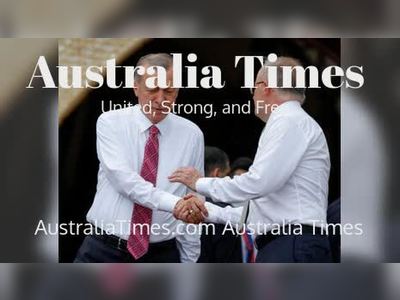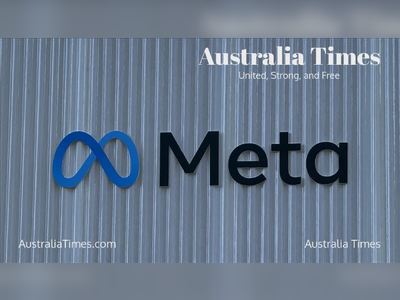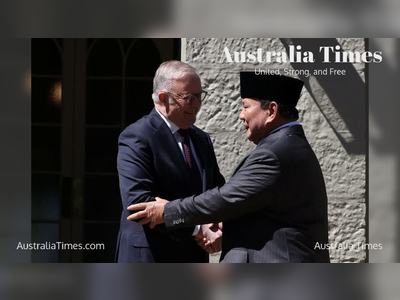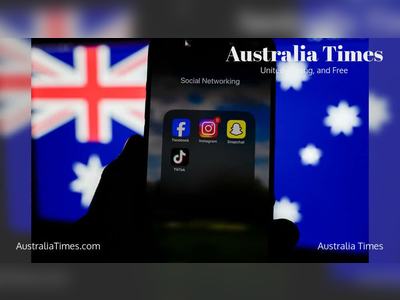Australia to Levy Major Tech Platforms for Failing to Strike News-Publisher Deals
Labour government unveils new “news bargaining incentive” charging platforms with Australian revenue above A$250 million that refuse deals with publishers
Australia’s federal government has introduced a proposed scheme that would levy large online platforms millions of dollars if they decline to negotiate commercial agreements with local news publishers.
Under the plan, platforms with Australian-derived revenue of at least A$250 million (approximately US$160 million) — regardless of whether they carry news content — will face a charge unless they voluntarily reach deals.
The measure, labelled the “News Bargaining Incentive”, has been announced by the assistant treasurer and will apply from the 2025 income-tax year, subject to forthcoming legislation and a public consultation.
The incentive applies to digital platforms operating a significant search or social-media service, and allows them to offset payments made under publisher deals against the charge — with the offset designed to exceed one-for-one to encourage deal-making.
The policy aims to reinforce the earlier 2021 “News Media and Digital Platforms Mandatory Bargaining Code”, which enabled designation of platforms to force negotiations.
That code helped secure roughly thirty deals, estimated at A$200 million-A$250 million per year for publishers, yet was criticised for allowing platforms to avoid obligations simply by removing news content.
A key driver of the new design was the decision by Meta Platforms, Inc., owner of Facebook and Instagram, to cease renewing its Australian news-publisher agreements from March 2024 — thereby avoiding the earlier code’s obligations.
In response, the government said it needed a mechanism that treats platforms on the basis of total Australian revenue, not solely the presence of news links.
Under the incentive, platforms that choose not to negotiate will incur a charge calculated on group-level Australian revenue.
Treasury has indicated that the scale of current deals is roughly equivalent to 1.5 % of Australian revenue of relevant platforms; the charge is expected to be higher — possibly up to 2.25 % — so as to create a meaningful incentive to negotiate.
The government emphasises that the objective is not to raise tax revenue, but to catalyse negotiated payments to support journalism and a healthy public-interest news sector.
For eligible off-set expenditure (such as payments to publishers or other contributions to news-making), each A$1 spent may reduce more than A$1 of liability under the charge.
The consultation paper issued in early 2025 will invite feedback on definitions (what constitutes a social media or search service), the revenue threshold, the calculation base (total Australian revenue vs digital-advertising revenue only), and how to funnel any collected charges or offsets to publishers.
On completion of consultation, legislation is expected later in 2025 with application in the 2026 fiscal year.
Media companies including News Corp Australia and Nine Entertainment Co. have welcomed the stronger incentive, citing declining advertising revenues and publisher restructures.
The government sees the new regime as targeting platforms such as Meta, Alphabet Inc. (owner of Google) and ByteDance Ltd. (owner of TikTok) — all of which are expected to meet the threshold.
In a broader context, the move follows a wider regulatory push by the Australian Labor government on digital-platforms reforms, including online safety, digital competition, and data-reporting regimes.
The new measure has been framed as closing a “loophole” in the earlier code that allowed platforms to drop news altogether rather than engage in payments.
Supporters of the policy argue it helps ensure a resilient news ecosystem in Australia, and that platforms enjoying significant advertising revenue in the country should contribute to the cost of generating original journalism.
Some independent commentary notes that how the funds are distributed — especially to smaller regional and local publishers — will determine whether the model succeeds in strengthening journalism beyond major metropolitan outlets.
The consultation window is set to remain open until mid-December 2025, after which the government will finalise its legislative approach for implementation in 2026.
Under the plan, platforms with Australian-derived revenue of at least A$250 million (approximately US$160 million) — regardless of whether they carry news content — will face a charge unless they voluntarily reach deals.
The measure, labelled the “News Bargaining Incentive”, has been announced by the assistant treasurer and will apply from the 2025 income-tax year, subject to forthcoming legislation and a public consultation.
The incentive applies to digital platforms operating a significant search or social-media service, and allows them to offset payments made under publisher deals against the charge — with the offset designed to exceed one-for-one to encourage deal-making.
The policy aims to reinforce the earlier 2021 “News Media and Digital Platforms Mandatory Bargaining Code”, which enabled designation of platforms to force negotiations.
That code helped secure roughly thirty deals, estimated at A$200 million-A$250 million per year for publishers, yet was criticised for allowing platforms to avoid obligations simply by removing news content.
A key driver of the new design was the decision by Meta Platforms, Inc., owner of Facebook and Instagram, to cease renewing its Australian news-publisher agreements from March 2024 — thereby avoiding the earlier code’s obligations.
In response, the government said it needed a mechanism that treats platforms on the basis of total Australian revenue, not solely the presence of news links.
Under the incentive, platforms that choose not to negotiate will incur a charge calculated on group-level Australian revenue.
Treasury has indicated that the scale of current deals is roughly equivalent to 1.5 % of Australian revenue of relevant platforms; the charge is expected to be higher — possibly up to 2.25 % — so as to create a meaningful incentive to negotiate.
The government emphasises that the objective is not to raise tax revenue, but to catalyse negotiated payments to support journalism and a healthy public-interest news sector.
For eligible off-set expenditure (such as payments to publishers or other contributions to news-making), each A$1 spent may reduce more than A$1 of liability under the charge.
The consultation paper issued in early 2025 will invite feedback on definitions (what constitutes a social media or search service), the revenue threshold, the calculation base (total Australian revenue vs digital-advertising revenue only), and how to funnel any collected charges or offsets to publishers.
On completion of consultation, legislation is expected later in 2025 with application in the 2026 fiscal year.
Media companies including News Corp Australia and Nine Entertainment Co. have welcomed the stronger incentive, citing declining advertising revenues and publisher restructures.
The government sees the new regime as targeting platforms such as Meta, Alphabet Inc. (owner of Google) and ByteDance Ltd. (owner of TikTok) — all of which are expected to meet the threshold.
In a broader context, the move follows a wider regulatory push by the Australian Labor government on digital-platforms reforms, including online safety, digital competition, and data-reporting regimes.
The new measure has been framed as closing a “loophole” in the earlier code that allowed platforms to drop news altogether rather than engage in payments.
Supporters of the policy argue it helps ensure a resilient news ecosystem in Australia, and that platforms enjoying significant advertising revenue in the country should contribute to the cost of generating original journalism.
Some independent commentary notes that how the funds are distributed — especially to smaller regional and local publishers — will determine whether the model succeeds in strengthening journalism beyond major metropolitan outlets.
The consultation window is set to remain open until mid-December 2025, after which the government will finalise its legislative approach for implementation in 2026.
AI Disclaimer: An advanced artificial intelligence (AI) system generated the content of this page on its own. This innovative technology conducts extensive research from a variety of reliable sources, performs rigorous fact-checking and verification, cleans up and balances biased or manipulated content, and presents a minimal factual summary that is just enough yet essential for you to function as an informed and educated citizen. Please keep in mind, however, that this system is an evolving technology, and as a result, the article may contain accidental inaccuracies or errors. We urge you to help us improve our site by reporting any inaccuracies you find using the "Contact Us" link at the bottom of this page. Your helpful feedback helps us improve our system and deliver more precise content. When you find an article of interest here, please look for the full and extensive coverage of this topic in traditional news sources, as they are written by professional journalists that we try to support, not replace. We appreciate your understanding and assistance.











